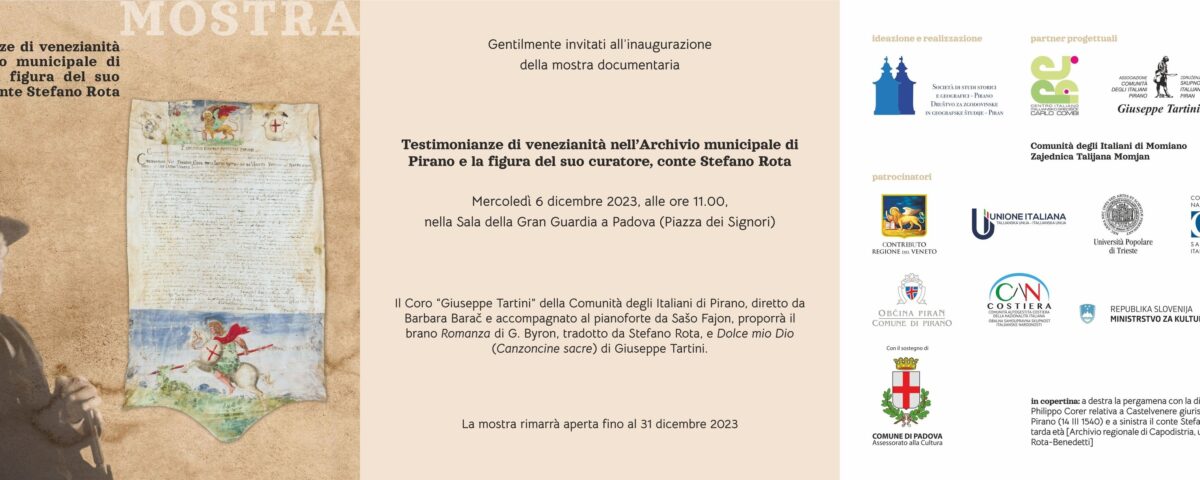Promemoria degli eventi in programma dal 4 al 10 dicembre

Invito: Inaugurazione della mostra LUCIANO KLEVA
12/05/2023
La mostra dei preseppi a Gallesano
12/05/2023
– Mercoledì 6 dicembre alle 18, Palazzo Tarsia a Capodistria
– Giovedì 7 dicembre alle 18, Galleria Insula e alle 18.30, Palazzo Manzioli a Isola
– Venerdì 8 dicembre alle 18, Casa Tartini a Pirano
LUCIANO KLEVA
Mostra dell’artista isolano
Organizzatori: Comunità autogestita della nazionalità Italiana di Isola in collaborazione la Comunità autogestita della nazionalità Italiana di Pirano, la Comunità autogestita della nazionalità Italiana di Capodistria e la Galleria Insula di Isola.
– Mercoledì 6 dicembre a Padova
TESTIMONIANZE DI VENEZIANITÀ NELL’ARCHIVIO MUNICIPALE DI PIRANO E LA FIGURA DEL SUO CURATORE, CONTE STEFANO ROTA
Inaugurazione della mostra documentaria
Organizzatore: Centro italiano Carlo Combi Capodistria
– Sabato 9 dicembre nel Parco del Sole a Santa Lucia, dalle 10 alle 14
FESTA DI SANTA LUCIA
Alla manifestazione partecipano i gruppi creativi della Comunità degli Italiani “Giuseppe Tartini” Pirano e la Scuola dell’Infanzia la Coccinella di Pirano.
Organizzatore: Comunità locale Lucia
– Domenica 10 dicembre alle ore 17 presso l’Auditorio di Portorose
TESTIMONIANZE
Presentazione del progetto Interviste ai nostri anziani. (Seconda parte – continuazione)
Organizzatore: Associazione dei giovani della Comunità nazionale italiana in collaborazione con la Comunità autogestita della nazionalità italiana Pirano e la Comunità degli Italiani “Giuseppe Tartini” Pirano.
Per i piu piccoli:
UN MARE D’EMOZIONI INVERNALI
DICEMBRE ALL’EX MAGAZZINO GRANDO
Sabato 9 dicembre alle ore 11: Rudolph la renna dal naso rosso
Lettura musicata con l’arpa a cura di Elisabetta Cancelli voce recitante ed Elisa Manzutto arpa irlandese.



